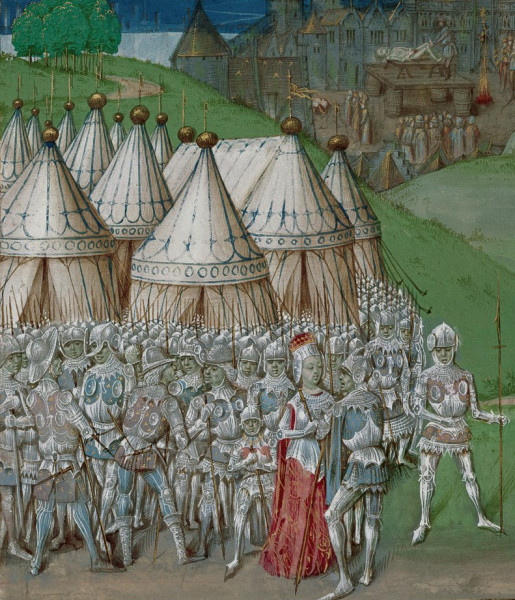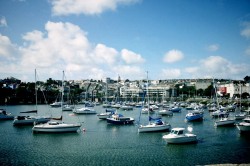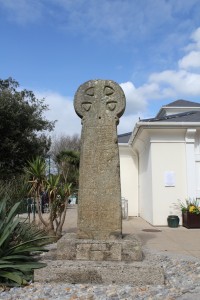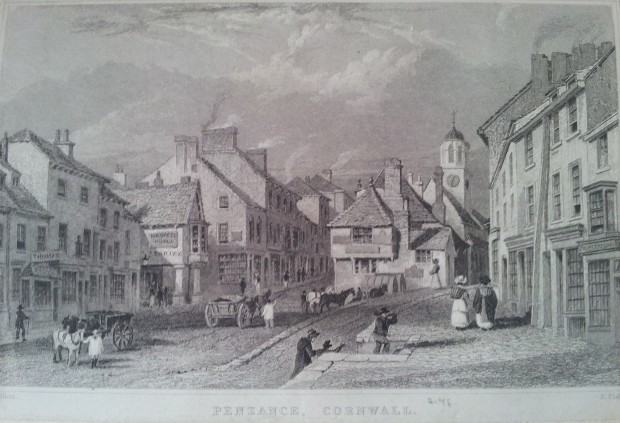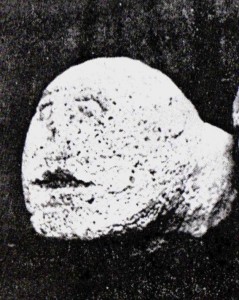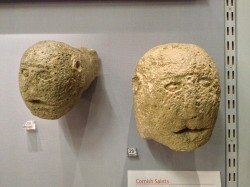Alice de Lisle's family
/This is a first attempt at reconstructing Alice de Lisle's family tree and to examine her historical context. Alice was Lord of the Manor of Alverton, Penzance's economic centre in the Middle Ages, from 1327 until her death in 1347, and petitioned for the town's first permanent market and fairs in 1332. This grant also permitted a permanent fair in Mousehole. Download Alice de Lisle's Family Tree (showing Lords of the Manor of Alverton, Penzance) (PDF, 565KB)
The Tyeys
Alice came from the Tyeys family whose Cornish roots began with her great-grandfather Henry de Tyeys who was born in the estate/manor of Tywarnhaile (Tywarnhayle), on the north coast near Perranporth, around 1205. It seems, however, that Henry Tyeys was awarded the lordship of Tywarnhaile at some point around 1221 (yet to be cross-checked). He is documented to have accompanied Richard of Cornwall to Gascony in 1225. The Tyeys' previous roots were in Norfolk.
He and his wife Isabel had a son, also Henry (c.1235-c.1282). It is this Henry de Tyeys that connects the Tyeys to the manor/estate of Alverton.
It seems Henry of Tywarnhaile (c.1205-c.1240) was in the king's service as a mercenary (King John, famous for Magna Carta, then King Henry III--brother of Richard, 1st Earl of Cornwall) and was awarded various estates to sustain him and his household and retinue. He and his wife Isabel had a son, also Henry (c.1235-c.1282). It is this Henry de Tyeys that connects the Tyeys to the manor/estate of Alverton. Henry Tyeys was apparently born in Alverton and was part of Richard, Earl of Cornwall's expedition to Germany in 1262. He married Joan Foliot of Fritwell, Oxfordshire which brought in a new estate to the family. He died around 1282 in Wales.
Their son was a third Henry de Tyeys (c.1263-c.1307), Alice's father, who inherited the family estates in Cornwall, Oxfordshire and elsewhere in 1284. Like his forebears he worked closely with Richard, Earl of Cornwall, in the king's service at home and abroad and is documented to have served in Wales in 1287 and 1292, Flanders in 1297 and against the Scots in 1299-1306. He fought at the battle of Falkirk on 22 July 1298, and was present at the siege of Carlaverock in July 1300. In 1307 he was made a baron and took the title 1st Baron Tyeys. He was married in 1285, to Hawise de Neville (c.1265-1332) who came from Laceby in Lincolnshire.
Alice was born in Fritwell, Oxfordshire, an estate inherited from Alice's grandmother, Joan.
Henry and Hawise had two children, Henry, 2nd Baron Tyeys (1285-1322) and Alice de Tyeys (c.1297-1347). Henry was born at a family estate in Chilton Foliot (or Foliat) in Wiltshire and Alice was born at another in Fritwell, Oxfordshire (an estate inherited from Alice's grandmother, Joan). Around 1316 Henry married Margaret de Thiebot (c.1303-1349) who came from Salisbury, Wiltshire. They had no (surviving) children.
He was hung, drawn and quartered at the Tower of London and his family's estates, including Alverton, were forfeited.
Henry, 2nd Baron Tyeys, continued the family tradition of working in the king's service but became embroiled in baronial factions during the reign of King Edward II (1284-1327) and the political instability caused by the so-called Reign of the Despensers (a family that the longer-standing barons resented because of their undue influence and rewards from the king). He also sat in Parliament and was also made Controller of the Isle of Wight. But Henry's story is for someone else to write. Henry met a sticky end on 3 April 1322 along with many other barons who ended up on the wrong side of the power vacuum caused by the Despenser controversy. He was hung, drawn and quartered at the Tower of London and his family's estates, including Alverton, were forfeited. He was buried in the church of the Carmelites in London. That was the end of the Tyeys.
The Lisles
Warin de Lisle was executed (hanged) at Pontefract, Yorkshire in March 1322.
The Despenser war of 1321-22 was to deal a double blow to Alice. Alice married into the de Lisle family in about 1310/11 at the de Lisle or L'isle (Latin de Insula = of the Island) family estate in Kingston Lisle, near Sparsholt in Berkshire. Her husband was called Warin de Lisle (c. 1276-1322). Between around 1305 (when Alice was about 18 years old) and around 1314 they had five children, Henry, Gerard (later 1st Baron de Lisle) Mary, Alice, Warin and Margery.
Warin fought in wars in Scotland during the reign of King Edward I and was later made Governor of Windsor Castle and Warden of the Forest. In 1320-1 he joined the forces of Thomas, Earl of Lancaster against the Despensers. It is likely that Alice spent most of her time at Kingston Lisle during this time. Along with his rebel leader Earl of Lancaster, Warin de Lisle was executed (hanged) at Pontefract, Yorkshire in March 1322. His estates, including Kingston Lisle, were also forfeited.
1322-1327: The mystery years and the inspiration of Isabella
Could Alice's extraordinary achievement in regaining the Tyeys and de Lisle family estates in 1327... have in any way been inspired by the strength of character shown by Isabella of France?
So Alice, mother of five, multiple estate manager in lieu of her brother and husband, was left theoretically homeless, without an income by the spring of 1322. And what of all the inhabitants of Alverton, Penzance? We don't really know much of what became of disenfranchised widows in such a situation. No doubt Alice's ties with extended family may have come to her aid. This period needs more research from a Cornish perspective.
Edward II's favourite Piers Gaveston had got his hands on the earldom of Cornwall in 1307 shortly after the king's succession, a title and privilege usually reserved for the monarch's male heirs (even before the creation of the Duchy in 1337). He was executed following a dubious trial orchestrated by various barons in 1312. It is possible that the Tyeys withdrew support from the earl of Cornwall at this time and joined the growing discontent against him and Edward II. In 1316 the earldom was restored to the monarchy and the title Earl of Cornwall given to John of Eltham, Edward II and Isabella of France's second son in 1316 (until 1330). By this time both the Tyeys and de Lisles, having taken sides against supporters of Edward II, may have fallen out of favour with John as well.
Isabella reached the end of her tether when Hugh Despenser took Gaveston's place as the king's favourite after 1312, at which point baronial discontent bubbled up into out-and-out war.
But perhaps we might take a lead from another strand in the turbulence of political life in the 1320s. Isabella of France was colloquially known as the She-wolf. Having tolerated her husband's machinations with Piers Gaveston she reached the end of her tether when Hugh Despenser took Gaveston's place as the king's favourite after 1312, at which point baronial discontent bubbled up into out-and-out war.
So the story goes that Isabella returned to France and started an affair with Roger Mortimer in 1325 who had been exiled in France while the Despenser controversy carried on. He promised to return to England with a small mercenary army to depose Edward II. The king was duly ousted in 1326 and Isabella became Regent on behalf of her young son Edward III.
Berkeley Castle has another significance in the story of Alice de Lisle as her great-grand daughter Margaret de Lisle was to become the next female Lord of Alverton, her husband being Thomas "The Magnificent" de Berkeley
It is alleged that Edward II was imprisoned in Berkeley Castle and murdered by agents of Isabella and Roger Mortimer in October 1327. Berkeley Castle has another significance in the story of Alice de Lisle as her great-grand daughter Margaret de Lisle was to become the next female Lord of Alverton, her husband being Thomas "The Magnificent" de Berkeley, of which more in a future post. Indeed, several archives which may give us more clues to Alice's life are kept in the Berkeley Castle muniments.
...in Edward III's first parliament in 1327 all proceedings against Thomas, Earl of Lancaster, and his followers were annulled, paving the way for the disenfranchised Alice (amongst others) to restore their estates.
Isabella retained a close role in the management of England in Edward III's early years. Isabella's own influence was apparently unpopular, particularly peace-making in Scotland (which meant a good excuse for profit-making war was lost for many of the old barons). Nevertheless the young king's reign saw the beginnings of a series of reforms, legislation and stability in the English parliament in which Cornish aristocrats also took part. And in Edward III's first parliament in 1327 all proceedings against Thomas, Earl of Lancaster, and his followers were annulled, paving the way for the disenfranchised Alice (amongst others) to restore their estates.
Could Alice's extraordinary achievement in regaining the Tyeys and de Lisle family estates in 1327, petitioning and receiving a charter for markets and fairs in Penzance and Mousehole in 1332, restoring her husband's body to the family chantries in Wiltshire (in 1334), and much more besides, have in any way been inspired by the strength of character shown by Isabella of France?
In my next post I will discuss the Return of Alice de Lisle and follow the trail of her achievements after 1327 in more detail.
...to be continued.


